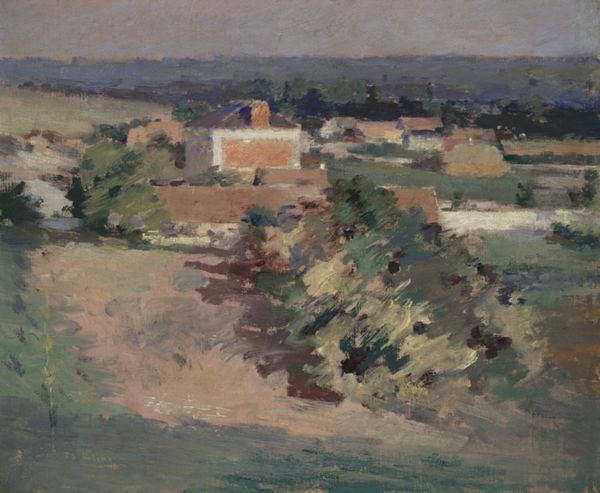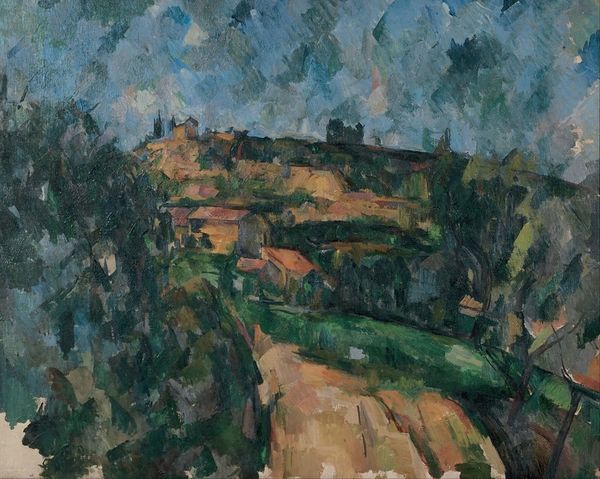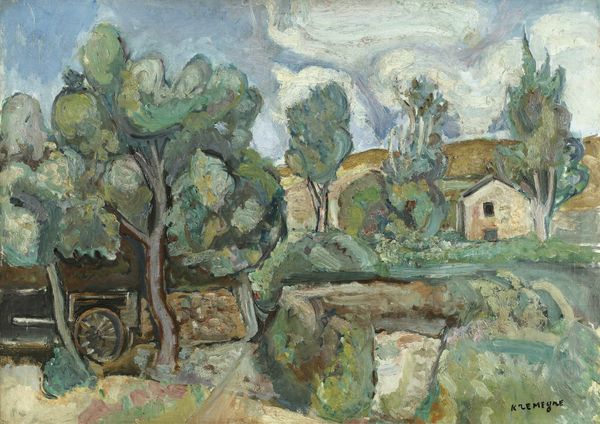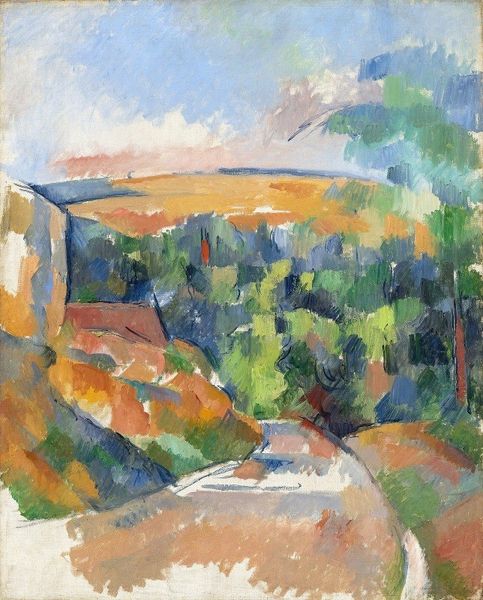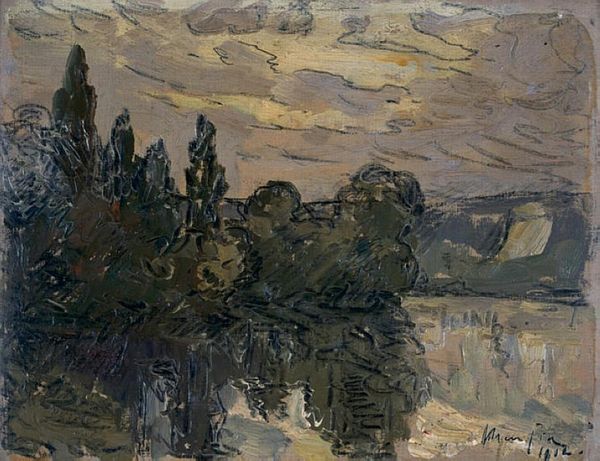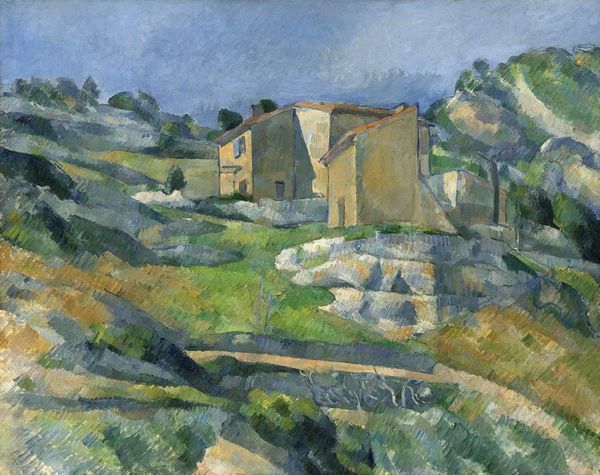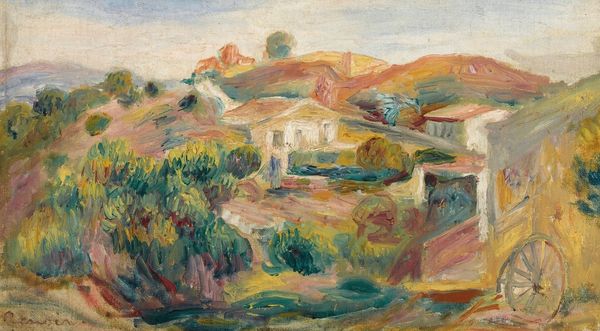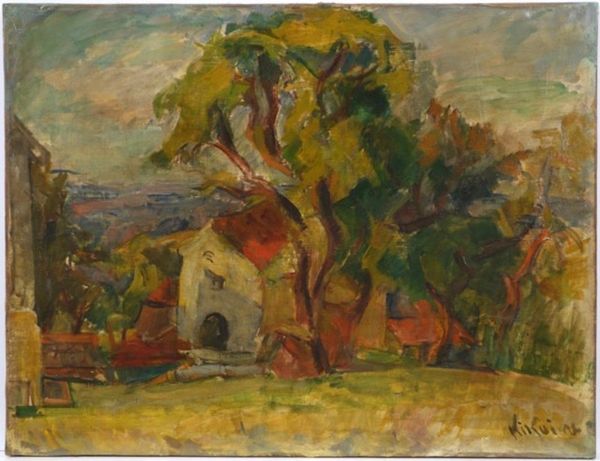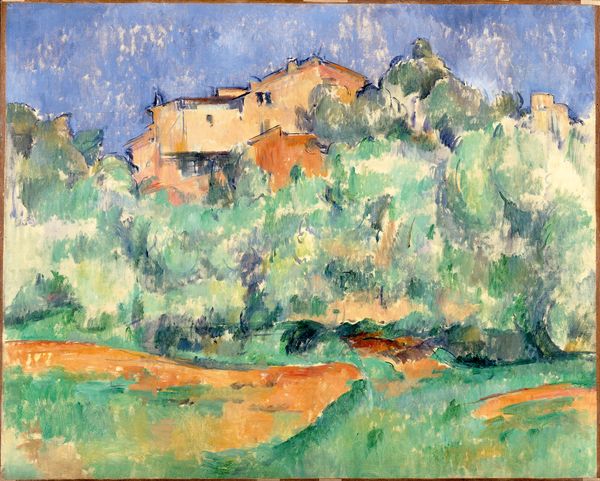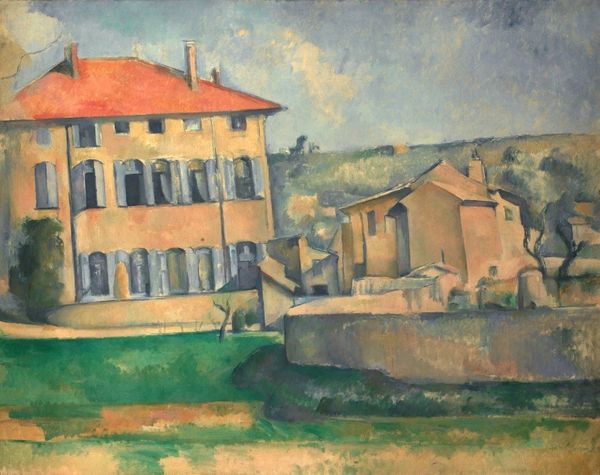
plein-air, oil-paint
#
impressionism
#
plein-air
#
oil-paint
#
landscape
#
oil painting
#
post-impressionism
Copyright: Public Domain: Artvee
Curator: Looking at this image, I immediately feel a sense of muted calm. The colors are soft, almost hazy. Editor: This is Paul Cézanne's "The Dovecote at Bellevue," painted between 1888 and 1892, likely en plein air considering its landscape subject and loose brushwork. What strikes you about that initial calmness? Curator: There's a definite flattening of perspective, but it contributes to a unified visual field. The way he applies these oil paints in block-like touches—it makes the whole scene cohere, without the conventional trappings of depth or realism. Editor: Indeed. Consider the economic and social context of late 19th-century France. Cézanne, a bourgeois artist who spent much time in his native Aix, worked at a time of rapid industrialization. These paintings offer an antidote; they provide almost an elegy to pastoral traditions on the verge of disappearing under new labor structures and modes of consumption. Curator: Perhaps, but it’s the construction itself, the painting’s internal logic that I find compelling. The formal arrangement guides my eye to create its own meaning: the placement of that round dovecote in relation to the dark roofline and how that lower field both leads and distracts. Editor: His process involved extensive use of preparatory sketches, often of laborers in his hometown and of specific sites where he made these kinds of landscapes, so labor is inherently part of the art making! It's the kind of process that requires one to return time and again to record slight environmental shifts. Curator: It’s intriguing to consider that repeated observation and revisiting. To note his shift away from any mimetic rendering—to focus on shape, color, and arrangement as the subjects themselves, without heavy ideological messaging. Editor: Ultimately, both perspectives seem valuable here, because without attending to Cézanne's social world, we deny an essential ingredient to art-making, but you're correct in assuming that his works stand firmly as innovative artistic explorations of structure. Curator: A delicate tension then. Editor: Precisely, a rich testament to Cézanne’s ability to straddle representation and abstraction through sustained focus and artistic exploration.
Comments
No comments
Be the first to comment and join the conversation on the ultimate creative platform.

